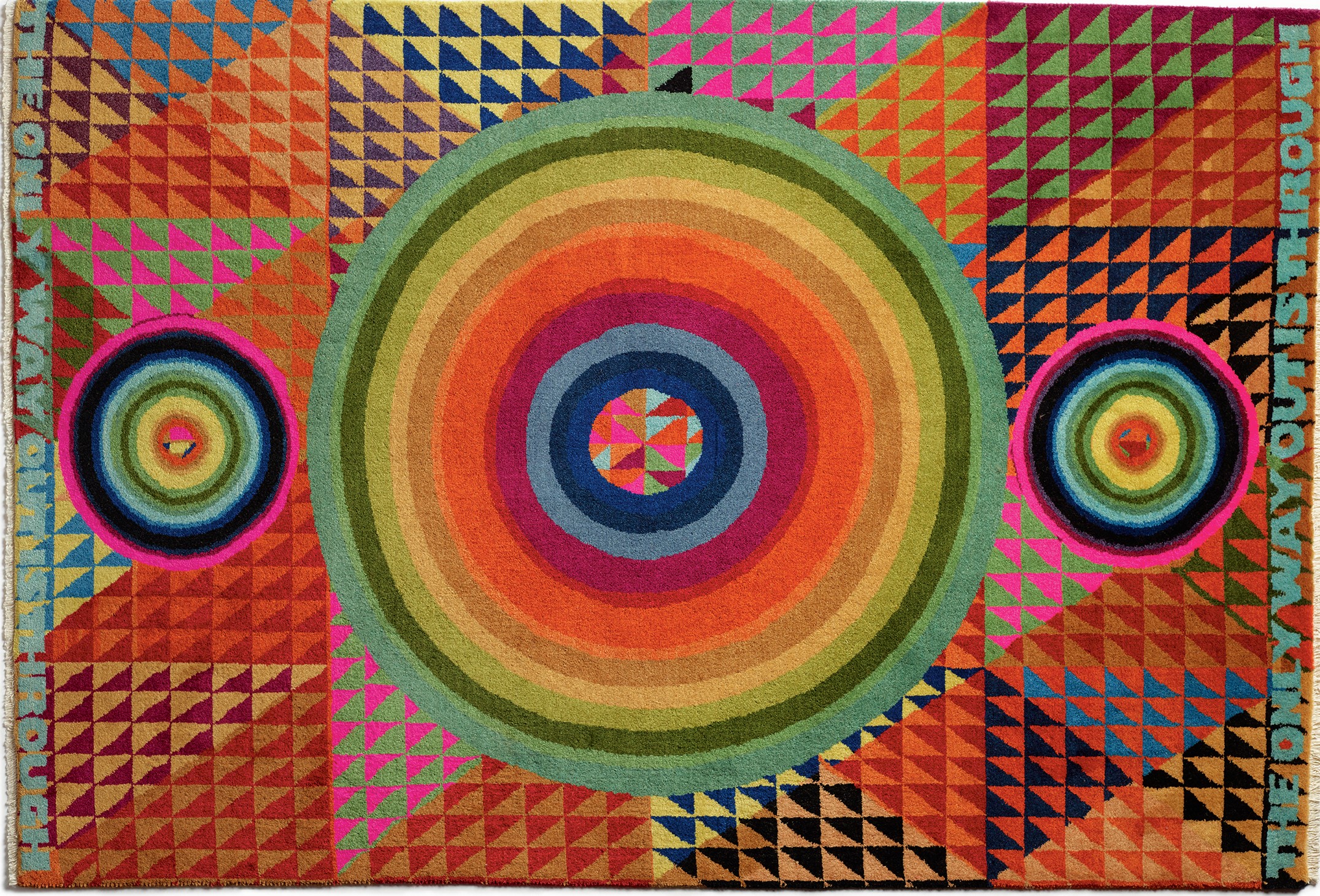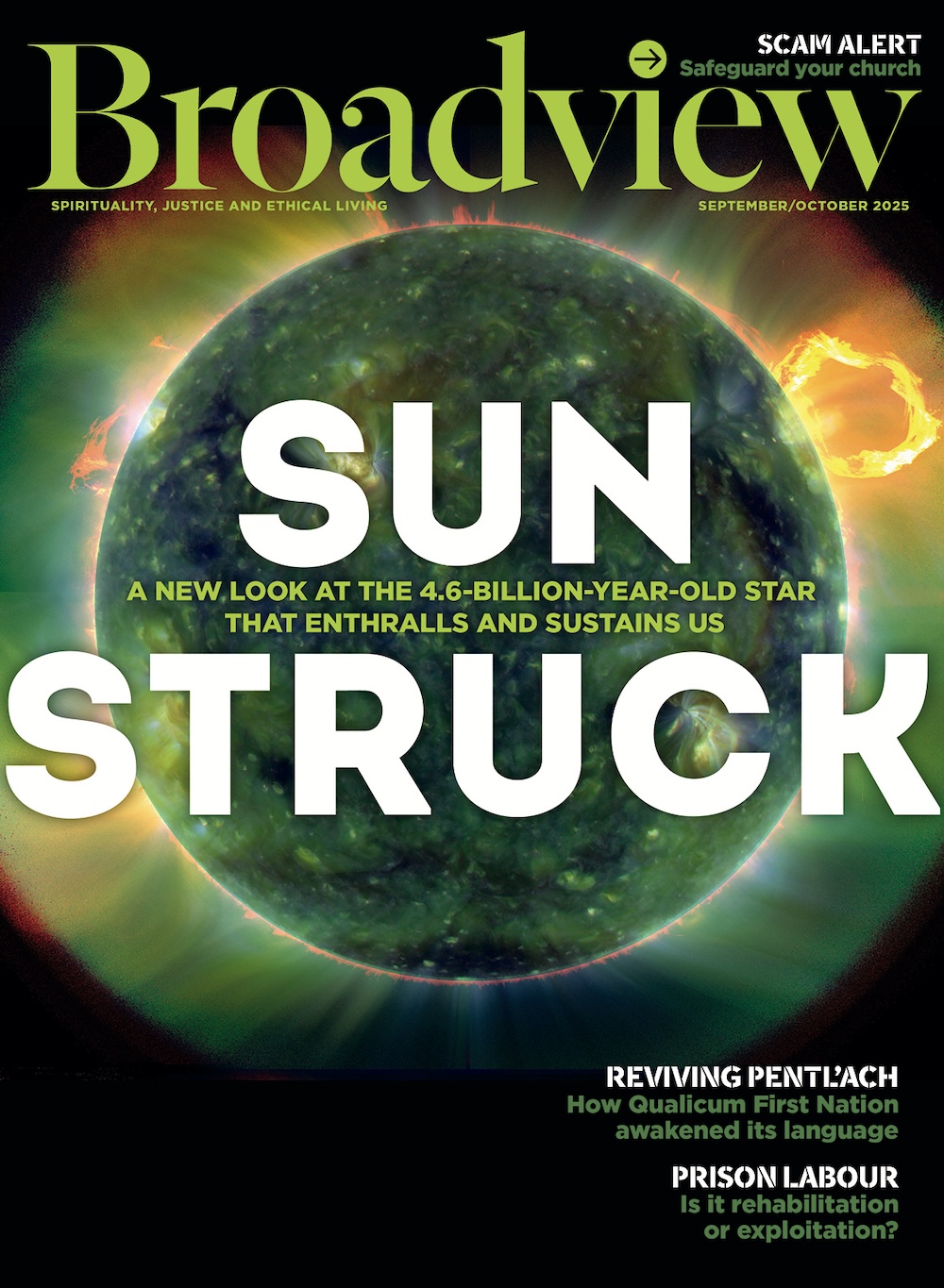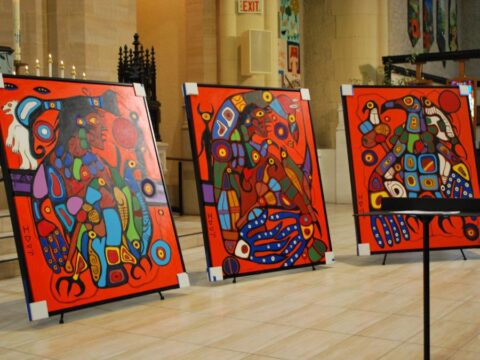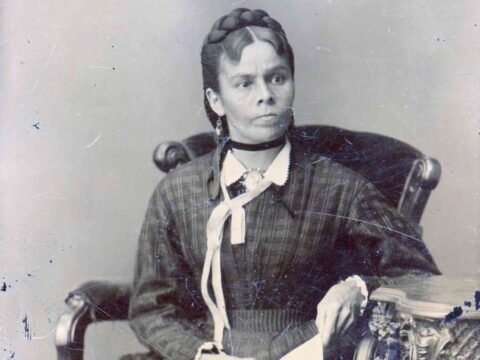Concentric circles in brilliant colours radiate outward amid panes of tiny triangles. A ribbon of text runs up each side: “The only way out is through.”
Fusing Indigenous aesthetics with western optical art, Jeffrey Gibson’s work is part of Sanctuary, a breathtaking exhibit on now at the Aga Khan Museum in Toronto. Laboriously crafted wool rugs, designed by 36 artists from 22 countries, explore the meaning of sanctuary in an era of global displacement. The rugs were modelled on the shape of Muslim prayer mats and woven by artisans in Pakistan.
You may unsubscribe from any of our newsletters at any time.
“Sanctuary is a necessity for everyone,” said Michael Chagnon, curator of the Aga Khan Museum, during a virtual tour. While the pandemic has forced people around the world to shelter at home, many lack a safe haven. There are currently over 70 million displaced people globally, including 26 million refugees.
The exhibit’s walls and furniture were created using old T-shirts and other recycled textiles, which will later be transformed into blankets and bags for those in need. However, what was designed to be a multi-sensory experience — the rugs were meant to be touched and knelt on — has been restricted during the pandemic to ensure visitor safety.
More on Broadview:
- Muslim women authors build new worlds through sci-fi and fantasy
- Tender new memoir explores life as a preacher’s wife
- 5 resources to help you become a better ally to Black people
The rugs vary widely in style and tone, from abstract patterns to political mantras. On Iraqi artist Adel Abidin’s rug, marching soldiers are reminiscent of displaced refugees. The last rug, by Uman of Somalia, shows images taken by the Hubble Space Telescope, mapping an “infinitesimally narrow sliver of the universe.”
“Our role within the cosmos is so small,” said Chagnon. “This should give us hope, because there is such vastness and so much beyond us…. There’s comfort in knowing that this really is our sanctuary, this cosmos we call home.”
Sanctuary runs until Oct. 25 at the Aga Khan Museum in Toronto; you can also take a virtual tour.
I hope you found this Broadview article engaging. The magazine and its forerunners have been publishing continuously since 1829. We face a crisis today like no other in our 191-year history and we need your help. Would you consider a one-time gift to see us through this emergency?
We’re working hard to keep producing the print and digital versions of Broadview. We’ve adjusted our editorial plans to focus on coverage of the social, ethical and spiritual elements of the pandemic. But we can only deliver Broadview’s award-winning journalism if we can pay our bills. A single tax-receiptable gift right now is literally a lifeline.
Things will get better — we’ve overcome adversity before. But until then, we really need your help. No matter how large or small, I’m extremely grateful for your support.
Jocelyn Bell
Editor/Publisher












